Taking Leave of the First Four Paragraphs
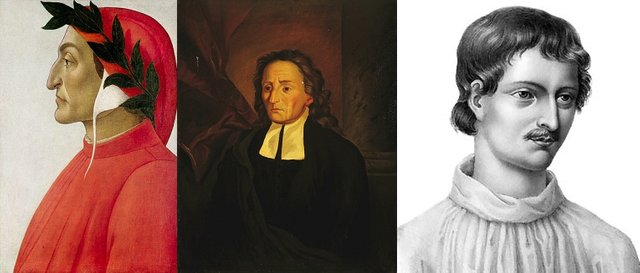
I have already devoted fourteen articles in this series to the first four paragraphs of James Joyce’s Finnegans Wake. This might seem like overkill, but one cannot be too familiar with the opening pages of this obscure book. And we are not quite finished with them yet. These are probably the most befarced paragraphs in the book. The amount of information that Joyce has packed into these thirty-seven lines beggars the imagination.
In the third of those fourteen articles I identified three Italian thinkers—poets and philosophers—as the Three Patron Saints of Finnegans Wake:
Dante Alighieri, whose theory of the polysemous nature of literature underpins the multilayered structure of Finnegans Wake.
Giambattista Vico, whose cyclic philosophy of history provided Joyce with a framework around which he wrought the cycling wheel of Finnegans Wake.
Giordano Bruno, whose philosophy of the coincidence of opposites—coincidentia oppositorum—provided Joyce with an engine to keep that wheel turning.
I also suggested that Joyce had slipped some subtle allusions to these individuals into the first paragraph of the book. Take the phrase commodious vicus, for example. These two words alone allude to all three men:
Dante Alighieri: commodious echoes the Italian word Commedia, the name by which Dante referred to his masterpiece The Divine Comedy.
Giordano Bruno commodious also alludes to the commode in the master bedroom of the Mullingar House. A commode is a chair fitted with a chamber pot. A jordan is a chamber pot : ergo Giordano Bruno, whose name means Brown Jordan. (Giambattista means John the Baptist, another link between Bruno and Vico.)
Giambattista Vico vicus obviously refers to Giambattista Vico. In his masterpiece, The New Science, Vico’s principal interest is Roman history, so even commodious—as a reference to the Roman Emperor Commodus—could be understood as an allusion to Vico, though Commodus is not actually mentioned in The New Science.
We could go further:
riverrun, past Eve and Adam’s In Dante’s Purgatorio, the rivers Lethe (“Oblivion”) and Eunoë (“Good Remembrance”) flow around Adam and Eve’s Earthly Paradise at the summit of Mount Purgatory. riverrun can also be glossed as Erinnerung, the German for memory, which makes the connection with Dante’s rivers even stronger. (Memory is also an important concept in the works of Vico and Bruno.)
from swerve of shore to bend of bay These two expressions describe the curving shoreline of Dublin Bay as seen by the embattled native on the shore and the foreign invader (or returning exile) at sea respectively. The phrase, then, exemplifies Giordano Bruno’s coincidentia oppositorum, or identity of opposites.
brings us by a commodious vicus of recirculation back to Howth Castle & Environs This is Giambattista Vico’s corso and recorso [course and recurrence]: “This is the Course of Nations ... And having arrived finally at the foot of the statue of Homer, they begin a Recurrence in the same order (Vico §41). The statue of Homer refers to the allegorical frontispiece (depintura) of The New Science.
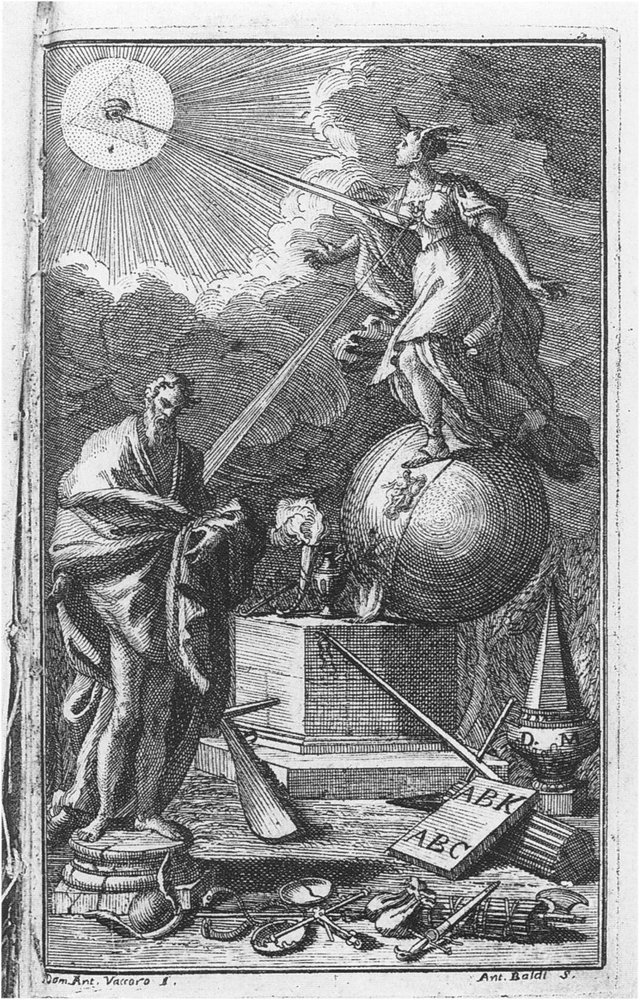
Each of these Italian thinkers informs one of the following three paragraphs, as we shall now see.

Dante Alighieri
In the fifteenth canto of the Paradiso, the concluding part of Dante’s Divine Comedy Dante meets his great-great-grandfather Cacciaguida, who flourished in the first half of the 12th century. Dante’s translator Dorothy L Sayers writes of this moment:
In the story, this encounter between Dante and his illustrious ancestor is one of the most poignant and climactic moments in the poem. Of all the souls with whom he has conversed in Hell, Purgatory and Paradise, this is the one from whom his life-blood flows ... From Cacciaguida to Dante flows not only the blood of illustrious forebears but also the past events of Florence, the history of Christendom, the inheritance of sin and of redemption, the burden and the glory of the cross. (Sayers 1984:190)
These words could just as easily be applied to Finnegans Wake, which also celebrates the unending flow of blood and history that links us all. But what is of immediate interest to us is the short passage in which Cacciaguida describes 12th-century Florence:

Florence, within her ancient walls embraced,
Whence nones and terce ring still to all the town,
Abode aforetime, peaceful, temperate, chaste.No glittering chain she wore, she wore no crown;
There went no dames bedizened, no bright girdle
To catch the eye and shine the wearer down;Nor at a daughter’s birth did terror curdle
The father’s blood, for date and dower between
Due limits kept both ways, nor leaped the hurdle.No empty houses in her streets were seen;
Sardanapalus had not come, to show
What chambering and wantonness might mean.Neither did your Uccellatoi’ outgo
Yet Montemalo, which, as in late days
It rose above, so shall it fall below.(Sayers 1984:188-189)
I do not know who was the first to notice the similarity between this passage and the second paragraph of Finnegans Wake with its succession of nor ... nor ... not yet ... not yet. I was first made aware of it by Raphael Slepon, whose encyclopaedic site FWEET is probably the Internet’s best website dedicated to Finnegans Wake. In his glosses for this paragraph he notes parenthetically:
the structure of this paragraph bears some resemblance to Dante: Paradiso XV.100-111
As we have seen, the second paragraph of Finnegans Wake has a clear sevenfold structure that evokes the rainbow of Genesis 9. Earlier in the Commedia, in Purgatorio 29, Dante too evokes the rainbow (and the moonbow of Delia, which may be even more appropriate for a book of the night like Finnegans Wake) during the Pageant of the Sacrament:
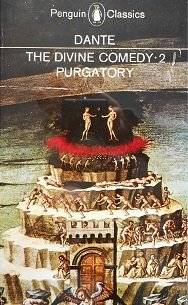
The beauteous pageantry flamed forth on high
Far brighter than the brightest moon could shine
At her mid-month in a clear midnight sky ...And [I] saw the flames advance, leaving the air
Behind them as it had been painted on;
They looked like pictured pennants, as it were,Whose seven great bands of colour lodged and shone,
Till the sky stood with all those hues engrossed
That streak the Sun’s bright bow and Delia’s zone.(Sayers 1983: 299 ... 300)
Note the logical flow from clause to clause in this paragraph of Finnegans Wake:
North Armorica in Clause 1 leads to Dublin, Georgia, in North America in Clause 2.
Peter Sawyer, the supposed founder of Dublin, Georgia (as Joyce erroneously thought), leads to St Peter in Clause 3.
St Patrick, who was miraculously transformed into a deer, leads to venison in Clause 4.
Venison leads to Vanessa in Clause 5.
Wroth leads to Rot in Clause 6.
Arclight , both a light in Noah’s Ark and the French arc de ciel, leads to the rainbow in Clause 7.
The final clause brings us back to the opening chapter of the Book of Genesis. The seven clauses are the seven days of Creation. The seventh day, when God rested from his labours, even has HCE in bed, resting from his labours!
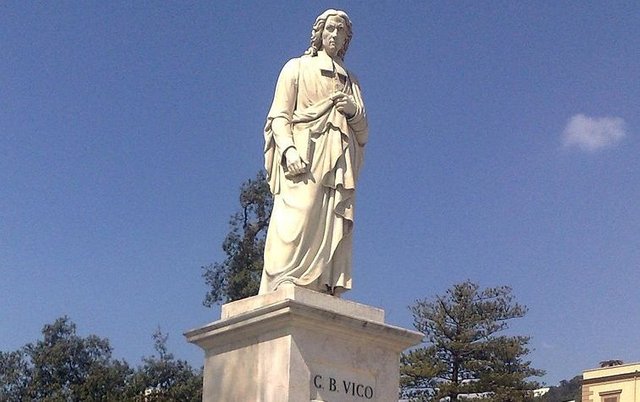
Giambattista Vico
The following paragraph gives us the first of the ten thunderwords that Joyce created for Finnegans Wake. Joyce lifted the thunderbolt from The New Science of Giambattista Vico.
Ulysses ... I made it out of next to nothing. Work in Progress ... I am making it out of nothing. But there are thunderbolts in it. (Mercanton & Parks 720-721)
A contributor to the FinnegansWiki website has written:
As each thunderword leads into another part of the book, it fits into Joyce’s usage of Vico’s philosophy to tell the story. Each thunderword leads to a new cycle and a deeper part of sleep, and a deeper, more muddled state in HCE’s mind (FinnegansWiki)
This is an idea I have not come across before, and I will keep it in mind as I read Finnegans Wake. I don’t know whether it is true, but it certainly makes sense in the case of the first thunderword, which occurs at the precise moment that the landlord of the Mullingar House falls asleep, as indicated by the word fall. HCE is, in some sense, the landlord’s dream self, so a significant alteration in HCE’s state of mind does take place at this early point in the novel.
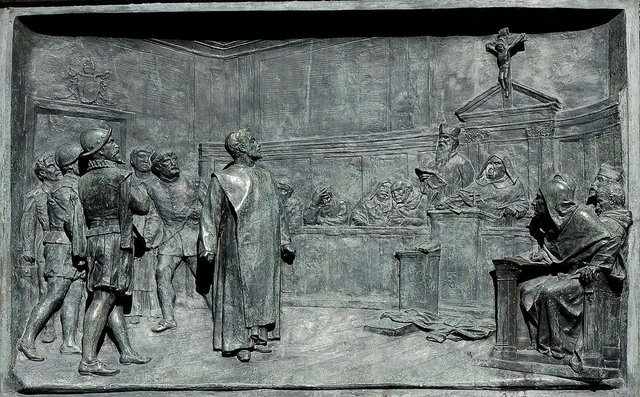
Giordano Bruno
The fourth paragraph of Finnegans Wake is a literary embodiment of Giordano Bruno’s concept of coincidentia oppositorum, or the identity of opposites. It is a very catalogue of polar opposites in conflict.
What, finally, is Finnegans wake all about? Stripping away its accidental features, the book may be said to be all compact of mutually supplementary antagonisms: male-and-female, age-and-youth, life-and-death, love-and-hate; these, by their attraction, conflicts, and repulsions, supply polar energies that spin the universe. Wherever Joyce looks in history or human life, he discovers the operation of these basic polarities. (Campbell, Robinson & Epstein 12-13)
I feel I have only begun to scratch the surface of these opening pages ... but time to be getting on.
References
- Joseph Campbell, Henry Morton Robinson, Edmund L Epstein (editor), A Skeleton Key to Finnegans Wake, New World Library, Novato CA (2005)
- James Joyce, Finnegans Wake, The Viking Press, New York (1958, 1966)
New York (1910) - Jacques Mercanton, Lloyd C Parks (translator), The Hours of James Joyce, Part 1, The Kenyon Review, Volume 24, Number 4 (Autumn 1962), pp 700-730, Kenyon College, Gambier OH (1962)
- Danis Rose, John O’Hanlon, The Restored Finnegans Wake, Penguin Classics, London (2012)
- Dorothy L Sayers, The Comedy of Dante Alighieri the Florentine, Cantica II, Purgatory (Il Purgatorio), Translated by Dorothy L Sayers, Penguin Books, Harmondsworth, Middlesex (1955, 1983)
- Dorothy L Sayers, The Comedy of Dante Alighieri the Florentine, Cantica III, Paradise (Il Paradiso), Translated by Dorothy L Sayers and Barbara Reynolds, Penguin Books, Harmondsworth, Middlesex (1962, 1984)
- Giambattista Vico, Thomas Goddard Bergin (translator), Max Harold Fisch (translator), The New Science of Giambattista Vico, Translated from the Third Edition (1744), Cornell University Press, Ithaca NY (1948)
Image Credits
- Dante, Vico and Bruno: Adapted from Wikimedia Commons, Public Domain
- Dante and His Poem: Wikimedia Commons, Domenico di Michelino (artist), Public Domain
- The Allegorical Frontispiece of Vico’s New Science: The depintura from Giambattista Vico’s Principi di Scienza Nuova, Domenico Antonio Vaccaro (engraver), Public Domain
- Paradise: Dante Being Led before God in the Celestial Rose, 15th Century, © Vatican Library, Photo Art Media/Heritage Images/Scala, Florence (H513168), Fair Use
- Purgatory: Domenico di Michelino (artist), Dante and His Poem, (detail), Photo Art Media/Heritage Images/Scala (0026057), Florence, Fair Use
- Vico’s Statue in Naples: Wikimedia Commons, © IlSistemone, Creative Commons License
- The Trial of Giordano bruno: Wikimedia Commons, Ettore Ferrari (artist), Public Domain
Useful Resources

You give brief descriptions,,, that's why its become easy for us to understand
Thanks a lot
all the photography of here are bringing the history of life ,,,, great article...
Thanks for sharing
I love to read your writing... really you write very well about history ... photography are also awesome
great article,, great post , great history..my dear friend
You are a great history writer @harlotscurse
nice photography are the symbol of history.. it represents about history of life
Its a great history my friend @harlotscurse
@harlotscurse You have earned a random upvote from @botreporter because this post did not use any bidbots.
Perfect literature great friend not to read it if it's great James Joyce admire it and I appreciate it a great example of talent and dedication is what it represents
wonderful history D:( friend @harlotscurse
i really love your post
thank you for share